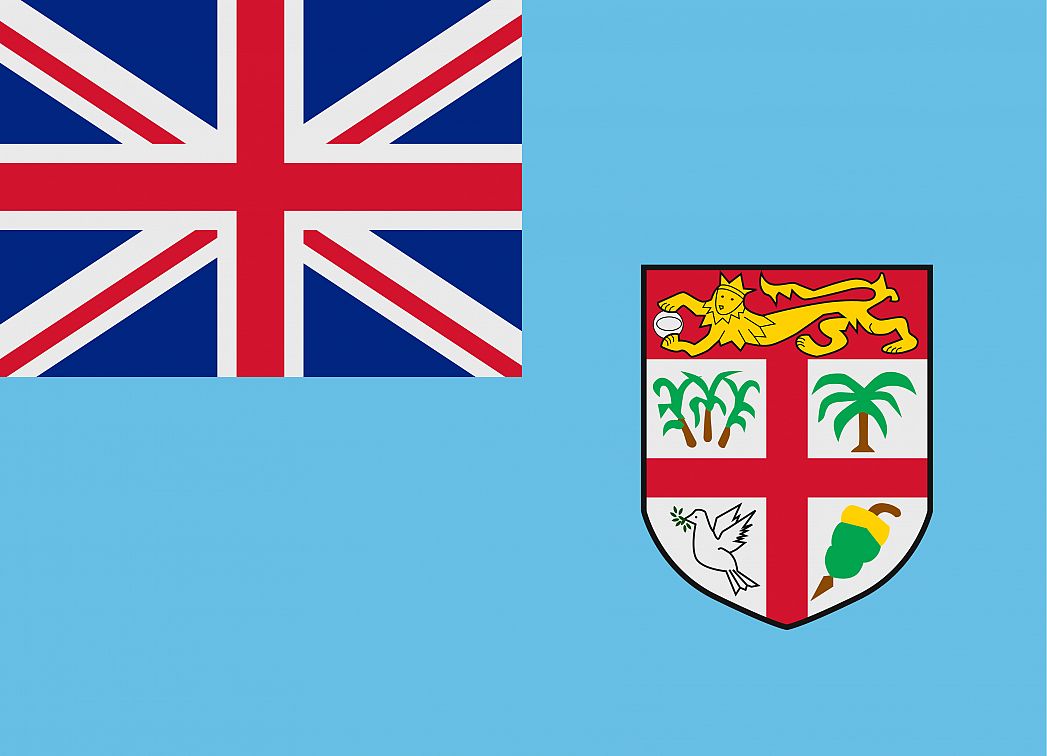The official flag of the island nation of Fiji consists of a solid light blue background. In its upper hoist side corner is a large Union Jack (or blue ensign). On the opposite side of the flag there is a shield depicting several features from Fiji’s coat of arms. These details include sugar cane, palm trees, a dove holding an olive branch, and banana fruits. Set atop these four elements is a lion holding a cocoa pod between its front paws. Fiji’s flag was adopted on October 10, 1970.
The bright blue color of Fiji’s flag is representative of the Pacific Ocean. The Union Jack symbolizes the nation’s long history as a colony of the United Kingdom and its ongoing connections to this European nation. The shield, which consists of a white shield with a red cross and a red chief, is an element taken directly from Fiji’s official coat of arms which received a Royal Warrant in 1908. The four images on the shield illustrate Fiji’s rich agricultural industry including locally grown products such as sugar cane, banana fruit, and coca. The lion depicted on the shield is a traditional British symbol.
Fiji’s flag has remained the same since the island’s time as a colony of the United Kingdom. After gaining the status of a republic in 1987, the flag wasn’t changed. Since that time there have been repeated calls for a new flag design. A vote was held in 2013 regarding the prospect of doing away with the Union Jack on the flag but after several months of voting the plan was cancelled.
Fiji’s official flag has not changed since its colonial days which lasted from 1874 to 1970. Prior to this, however, the government of the Pacific Ocean archipelago adopted a flag which featured blue and white vertical stripes and a red shield in the center. The shield features a dove holding an olive branch. Set just over the shield is a depiction of a red and gold crown.
This page was last modified on May 1st, 2018
More on Graphicmaps

Published on 2019-11-06
What is a Trade Embargo?

Published on 2019-11-04
Which Two Countries Used to Have the Same Flag?

Published on 2019-09-16
What Is the Only Two-Sided State Flag?

Published on 2019-09-16
Which Country Flag Looks Like the Texas Flag?

Published on 2019-08-29
Flags That Resemble the US Flag

Published on 2019-08-20
